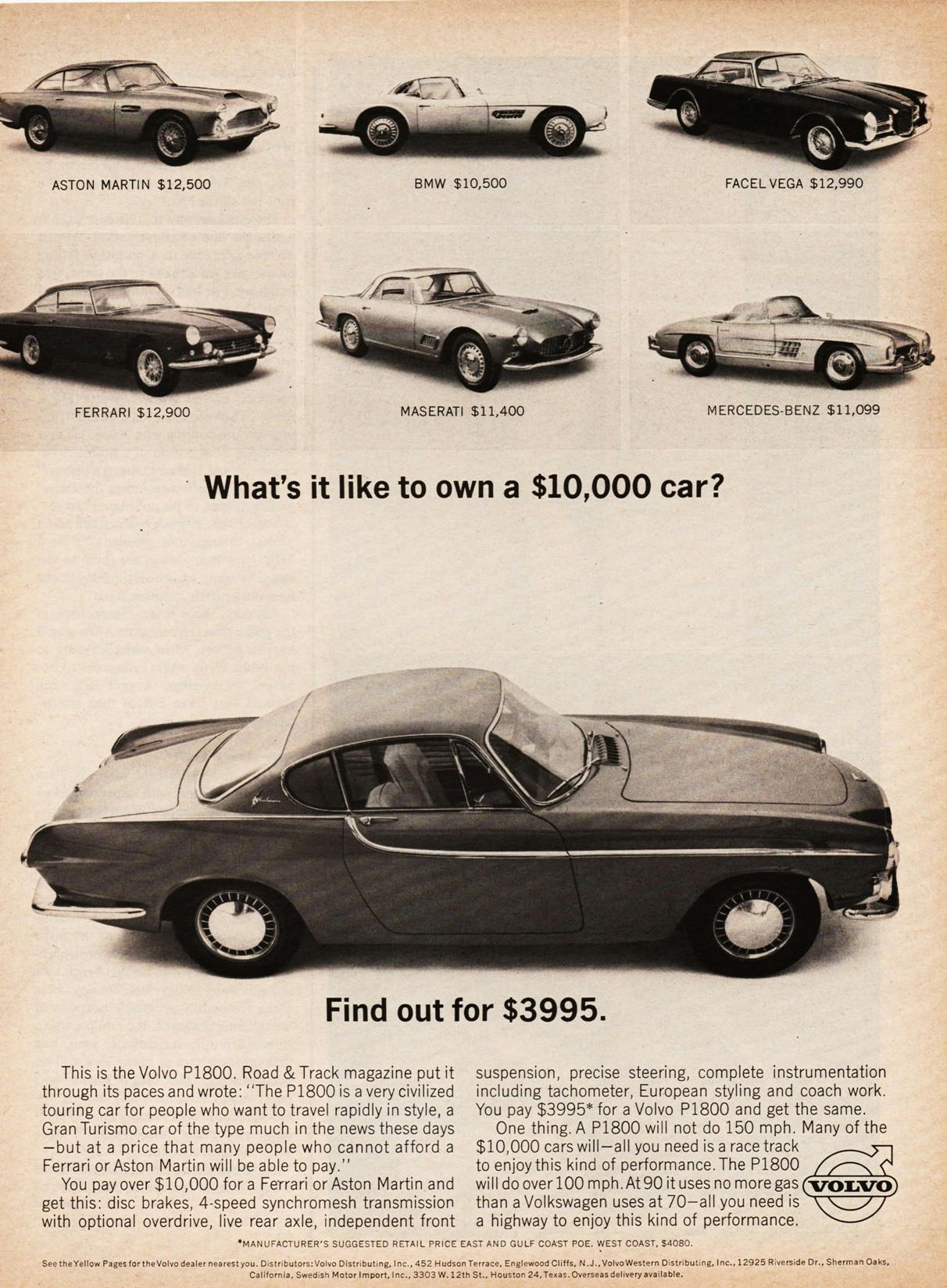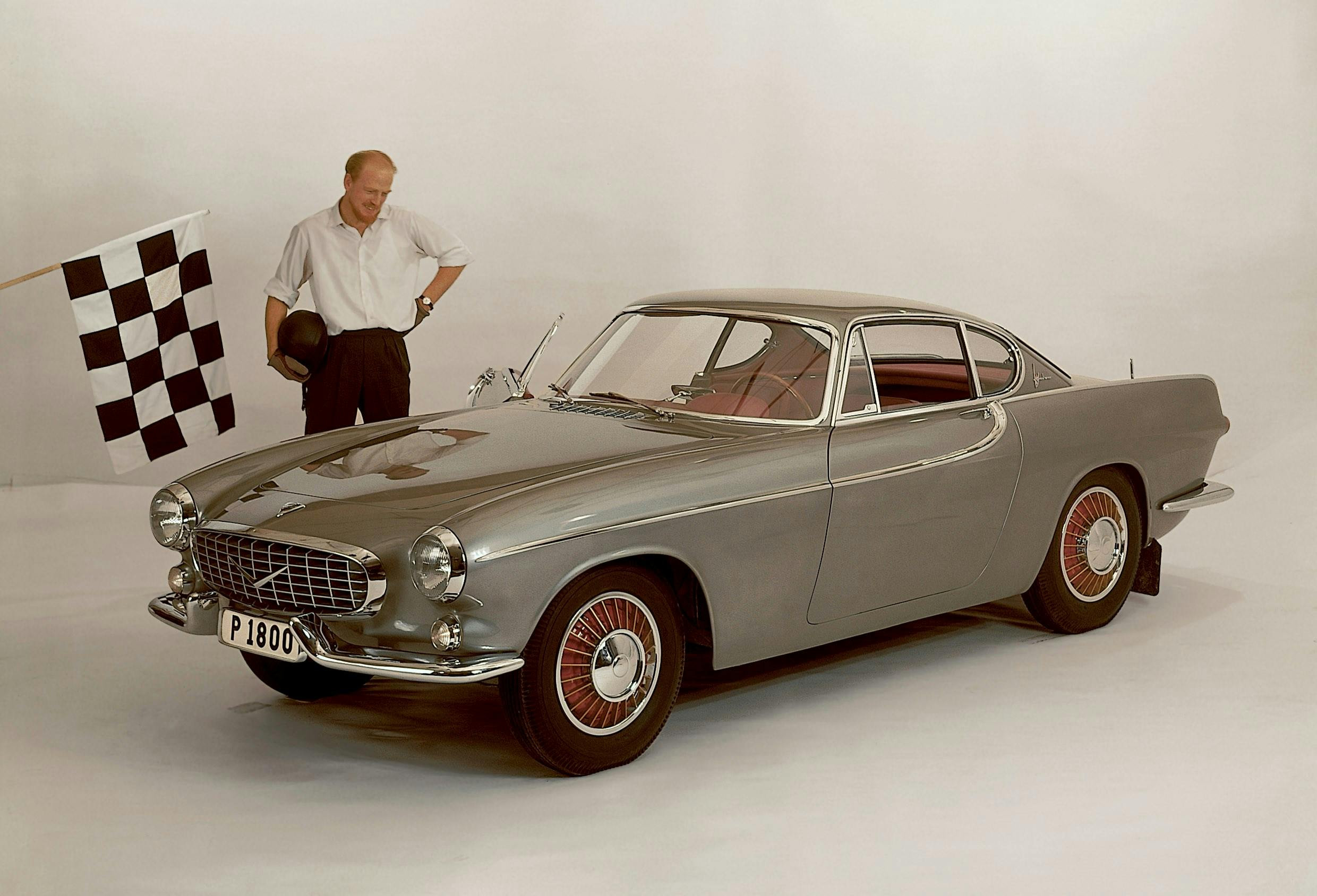Media | Articles
A 1961 Volvo P1800 is faster than all 2021 Volvos, which are now limited to 112 mph
First announced last year and going into effect now, all 2021 Volvos are limited to a top speed of 112 mph (180 km/hr). The company argues that this move will “help close the remaining gap to zero serious injuries and fatalities in traffic.” What’s more, the Swedes will also throw in a “Care Key,” allowing drivers to set additional limits before lending their cars to “other family members or to younger and inexperienced drivers.”
This leads us to the conclusion that, for the last sixty years, Volvo has been selling us a fleet of cars faster than what’s currently deemed its sportiest offering: the $64,800 S60 T8 Polestar Engineered sedan. Six decades ago, the option of clearing 112 mph in a Swedish car all began with the stunning P1800.

Designed by Pelle Petterson and powered by the B18B four-cylinder engine at first, Volvo’s sporty coupe was launched with 100 hp thanks to a pair of SU carburetors. With the 1.8-liter engine having higher compression than it did in an Amazon and five main crankshaft bearings to support higher revs, the powertrain also included a new and more durable four-speed gearbox known as the M40. Two years later, Volvo added the option of an overdrive fifth gear, but since this also required a higher-ratio differential, standard four-speeds retained a higher top speed—somewhere north of 110 mph.
In 1969, the P1800 was upgraded to the 2.0-liter B20B, a workhorse of a Volvo engine good for 118 hp. A switch to Bosch D-Jetronic fuel injection followed in 1970, and the resulting P1800E became a 118-mph affair with improved fuel economy.
Marketplace
Buy and sell classics with confidence
As Volvo pointed out in its period ads, the P1800 wasn’t supposed to compete in the 150-mph league but offered the same sporty equipment and styling as cars that cost triple the money. Production of the coupe ended after 39,407 units in 1972, followed by the P1800ES shooting brake in ’73.
Following the P1800’s lead, all range-topping Volvos since 1968’s 164 would be capable of speeds in excess of 112 mph. Given speed regulations (outside of select parts of Germany, that is), Volvo is correct in assuming that, by now, nobody is legally supposed to push their cars beyond this new factory-set 112-mph limit. However, when a company is selling you a car with a hybrid drive system producing 400 horsepower and 472 lb-ft of torque, one must wonder about the point of it all.











Thaxs